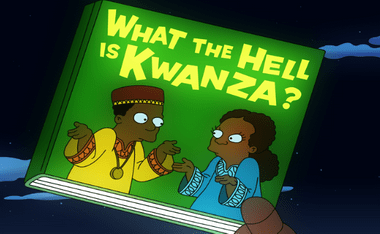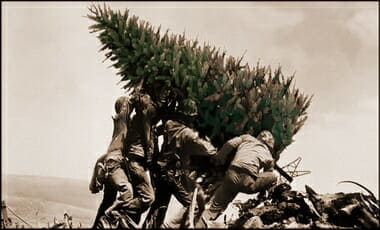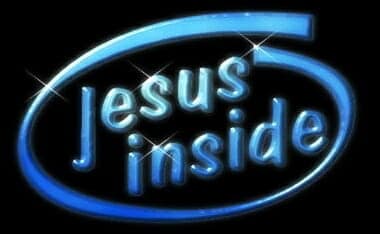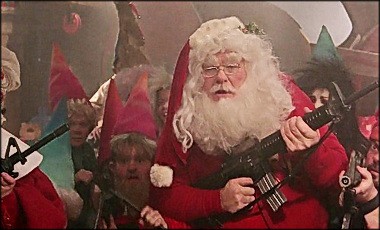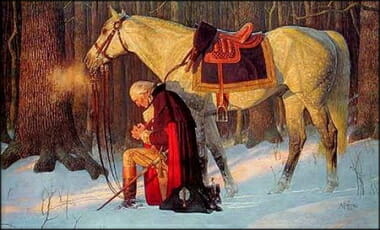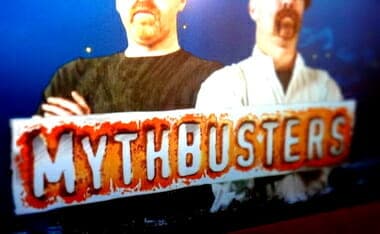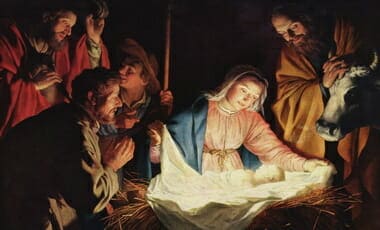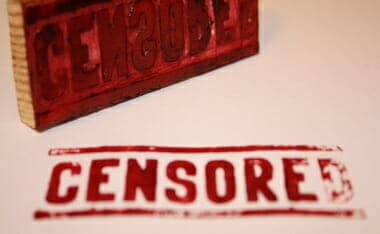(Don’t have a lot of time to read? Here is a quick take.) Kwanzaa is a complete fabrication. A make-believe holiday invented by an ex-convict, Ron N. Everett, who is known today as Dr. Maulana Karenga. In addition to having a nasty penchant for torture, Karenga was described by a prison psychiatrist as “both paranoid and schizophrenic with hallucinations.” Not exactly Santa Claus, eh?
- The creator of Kwanzaa is Maulana Ndabezitha Karenga, a 77-year-old professor of Africana studies at California State University, Long Beach. His real name is Ronald Everett. He was born in rural Maryland, the fourteenth child of a sharecropping Baptist minister.
- Karenga was convicted in 1971 for brutally torturing two naked women. The weapons of torture included a soldering iron, a vise and, of course, a toaster.
- Karenga concocted Kwanzaa in 1966 as a secular, “nonreligious” pan-African holiday. At the time, he was a twenty-something graduate student living in Los Angeles.
- Members of Karenga’s US Organization murdered two Black Panthers in cold blood. The murders occurred in 1969 when the US Organization and the Black Panthers were fighting over which group would control the then-new Afro-American Studies Center at the University of California, Los Angeles (UCLA).
- Karenga spent just four years in prison. He received a sentence of between one and 10 years for felonious assault and false imprisonment in 1971, related to the torture of Deborah Jones and Gail Davis.
- The name change. At some point in the 1960s, Karenga decided he didn’t want to be Ron Everett any longer. Instead, he gave himself the name “Maulana,” which is Swahili for “master teacher.” Karenga means “keeper of tradition” in Swahili.
(Originally posted here Dec 25, 2010 at 06:21)
- [What’s The Bottom Line?] This holiday season, spend your time celebrating real holidays like Christmas or Hanukkah, not a fake holiday invented by a Marxist, racist, violent criminal.

Kwanzaa: Racism in Disguise
Preface
This was a “clarification letter” written to my son’s fifth-grade teacher. The in-class activity was to break the kids up into groups and learn about the various holidays, so I politely asked that my son sit in on the Hanukah or Christmas table, as he had been assigned to the Kwanzaa table. I gave some reasoning behind this decision – as I often do about most decisions I make (my wife would beg to differ).
The reason I felt it necessary to clarify the original letter was because the teacher gave the original letter over to the Principle, and I heard through the grape-vine that the Principle called the letter, ergo me, racist. While I sympathized with the Principle a bit… because, well, I “look” like a racist (shaved head and all)… I just couldn’t let this pass by. I am sure that this sixties – Berkley attending – gentleman had gotten away with such a canard before, he unfortunately hadn’t researched his statement in my particular case enough.
First of all, while I look like a racist, I in fact have a wonderful black grandmother. Not only do I have a black grandmother, I also grew up in Detroit, where white kids at the public school and in my neighborhood were a minority. I didn’t just “have a black friend,” I, in fact, had very few white friends… my friends in other words had “a white friend.” Not only did the cultural and geographic peoples and places have an impact on me, but so to did theology. You see, I am a young earth creationist. Young earther’s believe that Adam and Eve were the originators of the human population and that from these first persons came the darker (say, Ethiopians) and person’s like myself (Irish). The Hebrew word for “Adam” is rooted in the word meaning “red-clay.” In fact, out of the 220-or-so stories of a world-wide flood from various cultures (Australian, southern/central/northern Native-Americans, Chinese, Russian, Welsch/British, etc., etc.) about half have a creation story of the first man being made as being red in color.
Not only did this principle not know my history or theology, he apparently didn’t realize that I quoted mainly from either black authors as well as from the L. A. Times for the letter. In fact, after having a sit down meeting with my son’s fifth-grade principle, I realized that he had not even read the original paper, he just assumed that any person who spoke out against Kwanzaa (whether rationally or illogically) was a bigot.
Unfortunately this old-school “sweeping-under-the-carpet” argument that I’m sure guided this gentlemen through many a brushing off of a parent just didn’t work in this case.
I made sure he read this second letter.
Enjoy, Papa Giorgio
Kwanzaa ~ Not Just Another Holiday!
A Letter from a Concerned Parent
(Fifth-Grade/2002 ~ updated 11-11-05)
Who Created Kwanzaa?
Kwanzaa was invented by Ron Kerenga in 1966 as a means to foster and help the Black Nationalist movement in their goal to segregate and separate the races. Ron Kerenga, thus, views people of Jewish decent, much like the Nation of Islam, as “devils,” to be stamped out like weeds. His views towards whites are very similar ~ racist, in-other-words. Let’s look at some of this history.
Kerenga founded and led the United Slaves, a Black Nationalist organization, which got into gun battles with the Black Panthers on occasion with people murdered as a result.
The biggest dispute between the United Slaves and the Panthers was for the leadership of the new African Studies Department at UCLA, with each group backing a different candidate. Panthers John Jerome Huggins and Alprentice “Bunchy” Carter verbally attacked Karenga at the meeting, which infuriated Karenga’s followers. After the meeting ended, two United Slaves members, George and Larry Stiner, reportedly confronted Huggins and Carter in a hallway, shooting and killing them.[1] [2]
In 1970, Kerenga and two of his followers were arrested by authorities for the torture of two of his female followers, Debra Jones and Gail Davis. Kerenga did time in prison for disrobing these two women at gunpoint and having them beaten severely. Kerenga told them that “Vietnamese torture is nothing compared to what we know,” whereupon he forced a hot soldering iron into the mouth of one while the other had a toe squeezed in a vice.
The Los Angeles Times described the events:
“Deborah Jones, who once was given the title of an African queen, said she and Gail Davis were whipped with an electric cord and beaten with a karate baton after being ordered to remove their clothes at gunpoint. She testified that a hot soldering iron was placed in Miss Davis’ mouth and placed against Miss Davis’ face and that one of her own big toes was tightened in a vice. Karenga, head of US, also put detergent and running hoses in their mouths, she said.” [1]
Karenga was sentenced to one-to-ten years in prison on counts of felonious assault and false imprisonment. At his trial, the question arose as to Karenga’s sanity. The psychiatrist’s report stated:
“This man now represents a picture which can be considered both paranoid and schizophrenic with hallucinations and illusions, inappropriate affect, disorganization, and impaired contact with the environment.” The psychiatrist reportedly observed that Karenga talked to his blanket and imaginary persons, and he believed he’d been attacked by dive-bombers.
Eight years later, California State University Long Beach named Karenga the head of its Black Studies Department. By this time, Karenga had “repented” of his black nationalism and had become just a harmless garden variety Marxist. This must be our esteemed university system’s idea of repentance![3]
How terrifying for these two women! According to the July 27, 1971 Los Angeles Times, a psychological profile of Kerenga described him “as a danger to society who is in need of prolonged custodial treatment in prison.” The profile noted that Kerenga, while legally sane, was “confused and not in contact with reality.”
The “seven principles” of Kwanzaa that Kerenga created as part of the Nguzo Saba are little more than Marxism transposed into afrocentric key.[4] Therefore, the Kwanzaa celebration, unlike – for instance – the Martin Luther King holiday, celebrates separatism and Black Nationalism. It would be the same as the school teaching and celebrating a holiday created by the Ku Klux Klan, or an offshoot thereof. (I would just as vehemently speak out against this as well, for when the school sets its seal of approval on a celebration, you teach all its goals and aims ~ whether religious or political.)
Created Equal
My point is that I teach my children that all men are created equal and that all men are equal in the eyes of God. This is what Christmas is all about! Jesus came to save the world (John 3:16-17), God’s Word has always stated that He has “made of one blood [i.e. from one man, Adam] all nations of men” (Acts 17:26, cf. 1 Cor. 15:45). Kerenga created Kwanzaa to shun the world and display racism as their main goal for the holiday season, in place of Christmas. In fact, when asked why he designed Kwanzaa to take place around Christmas, Karenga explained, “People think it’s African, but it’s not. I came up with Kwanzaa because black people wouldn’t celebrate it if they knew it was American. Also, I put it around Christmas because I knew that’s when a lot of bloods would be partying.” Great values!
Again, trying to tie in African culture and beliefs with this holiday celebration is a stretch, to say the least. Kwanzaa was created in 1966 by a revolutionary Marxist and racist man – Kerenga – who took here and there from the African culture as well as the Menorah from Judaism[5], and created a new celebration with socialist/Marxist overtones.
I have long-standing family friends who are native-born Africans (Kenyans), who have given their entire life to the mission field. They vehemently oppose this holiday because it creates subversion between the races when love is needed most. Neither do they find a connection with it and African culture. Mason Weaver points out the bottom line:
Professor Ron Karenga made up Kwanzaa in 1961 to counter the Western celebration of Christmas. Dr. Karenga made up a word, made up its definitions and then made up the elements we recognize today as “traditions.” First, “Kwanzaa” does not spell “first fruits” in Swahili or any other language. When I interviewed Dr. Karenga a few years ago, he admitted that the word was changed from the Swahili word “Kwanza” to “Kwanzaa” because he needed seven letters to represent his seven children. Because I spoke Swahili (and he apparently did not) Dr. Karenga was forced to admit that the word “Kwanza” was a Swahili adverb for “first,” and he added the extra “a” and “fruits” because it fit his story. And for all of you who wish to celebrate “first fruits,” the proper Swahili noun would be “Limbuko,” which would have given Dr. Karenga his seven letters for his children had he understood the language. (from Chapter 7 of It’s Okay to Leave the Plantation)
(Updated quote) Ann Coulter, likewise, points out the bottom line:
It is a fact that Kwanzaa was invented in 1966 by a black radical FBI stooge, Ron Karenga — a.k.a. Dr. Maulana Karenga — founder of United Slaves, a violent nationalist rival to the Black Panthers. He was also a dupe of the FBI.
In what was ultimately a foolish gamble, during the madness of the ’60s, the FBI encouraged the most extreme black nationalist organizations in order to discredit and split the left. The more preposterous the group, the better.
By that criterion, Karenga’s United Slaves was perfect. In the annals of the American ’60s, Karenga was the Father Gapon, stooge of the czarist police.
[….]
United Slaves were proto-fascists, walking around in dashikis, gunning down Black Panthers and adopting invented “African” names. (That was a big help to the black community: How many boys named “Jamal” are currently in prison?)
It’s as if David Duke invented a holiday called “Anglika,” which he based on the philosophy of “Mein Kampf” — and clueless public school teachers began celebrating the made-up, racist holiday.
Origins vs. Current Beliefs
Do the millions of black Americans who celebrate Kwanzaa think of it as the ritualization of socialism? Doubtful. Do they object to the mainstreaming of Kwanzaa symbols and products? Probably not. Do they know anything about Karenga and his past? It doesn’t seem so. When Karenga spoke at the Million-Man March, he went virtually unnoticed. However, the holiday’s origins in a terrible time and with a terrible person are certainly relevant to its legitimacy.
Neutrality?
I do not mind if the school teaches my son true history, which includes the history of Africa, as well as other Continents. However, having said this, I do not pay my hard earned tax dollars for the school to meet some need of trying to teach and include all the cultural holidays of the world, which apparently must include racist holidays founded right here in California’s radical [recent] past. That is not the schools job; it is mine, if I so choose!
This is why this subject is so “political,” you have in a sense undermined my family’s values and put it upon yourselves to teach my son “multi-culturalism” in a “politically-correct” fashion. This, then, requires the school to make value judgments on how to teach this to my child. Which is why I pointed out that by doing so, you have strayed from being neutral to taking a position on how to present other peoples cultural mores (which now includes racism as mainstream) to my child (in rejection of America’s cultural mores… which is Christmas and Hanukah, i.e., Judeo-Christian).
Back to the Original Premise!
So again, I restate my three points in the original letter[6] on why I asked to have my son join either the Christmas table or Hanukah table in class; in contradistinction to Kwanzaa or the Chinese New Year:
It [Kwanzaa] promotes and supports ethnic separation and segregation. For instance, Hallmark Cards and Giant Foods have a policy of any items related to Kwanzaa be produced and sold only by blacks (William A. Henry III, “The Politics of Separation,” Time Magazine [fall 1993]: 75).
This was also the intent of the founder of Kwanzaa, Dr. Maulana Kerenga, separation, not healing. Christmas promotes the latter.
It is not practiced equally with the traditional (Judeo-Christian) practices. For example: one public schools students and parents were asked to come in and share with the class about Kwanzaa, and other religious holiday practices of their Buddhist faith and Muslim faith as well as the traditions and practices of Hanukkah. When one parent attempted to share the true meaning Christmas, using a Nativity scene as a visual aid, the presentation was prohibited. (Ravi Zacharias, Deliver Us from Evil: Restoring the Soul in a Disintegrating Culture, p. 57).
It takes a political and moral stance. This type of multi-cultural “politically-correct” inclusive teaching takes a moral and political stance that requires value judgments to be made that are at variance with my (and many others) particular political and moral stance on afro-centric history and teaching… as well as putting one set of moral pre-suppositions (Marxism, racism, segregation) above others. Thus, taking a non-neutral position.
Notes
[1] “Kwanzaa — Racist Holiday from Hell” By Reverend Jesse Lee Peterson; FrontPageMagazine.com | December 29, 2004 –
http://www.frontpagemag.com/Articles/ReadArticle.asp?ID=16474
[2] Rev. Jesse Lee Peterson (a black-American) is the Founder and President of BOND (the Brotherhood Organization of A New Destiny, www.bondinfo.org). He is also the author of the book SCAM: How the Black Leadership Exploits Black America. For more information, please call 1-800-411-BOND (2663), or e-mail bond@bondinfo.org.
[3] Ibid.
[4] Afrocentrism is a political movement that believes Greek culture was borrowed from Black Africans. Among others on the Afrocentrist side is Emeritus Professor of Near Eastern History Martin Bernal who wrote Black Athena. Among others opposing him is Mary Lefkowitz, classical scholar and author of Not Out of Africa who denies the Greeks stole culture from Black Egyptians. There are some moderate positions, but the whole Afrocentrism controversy is based on concepts of race and racism, and is therefore very difficult to discuss without enraging someone.
From: http://ancienthistory.about.com/od/afrocentrism/g/afrocentrism.htm
[5] Kerenga believes that the black race are the real Jewish peoples, much like Christian Identity – the religious movement of the KKK – believes the white race to be the true Jewish peoples. The bottom line is this: both views are founded in racist ideology!
[6] Carlotta Morrow, the main author I quoted from heavily in my first letter to the school, (a black-American woman) began her research on Kwanzaa in the early 1980’s after her sister, who was a member of Dr. Karenga’s black activist group called the United Slaves (US) Organization, denounced her faith in Christ, claiming that Christianity was a white man’s religion.
Determined to find out the teachings that persuaded her sister’s complete change in faith, she went with her sister to “the Center” to hear what was being taught. She was deeply disturbed at the “us””white man” against the attitude that seeped through the meetings, and especially at the negativity directed toward the Christian and Jewish religions.
Seeing the spiritual and racial harm being subtly encouraged, Carlotta began her trek in learning, researching and exposing the real truth and spiritual seductiveness of the principles behind Kwanzaa.
She has had articles on Kwanzaa appear in the Southern California Christian Times, the Twin City Christian Magazine of Minnesota, Tout Timoun Nou Yo also of Minnesota, (a quarterly for families with children adopted from Haiti) and has been a guest on radio talk shows in the Southern California area which included an on-air discussion with Dr. Karenga on the Mason Weaver Show of KPRZ in San Diego, where the author resides.
In case you have never seen or heard Mason Weaver, he has a website called The Mason Weaver Show, as well as writing a book entitled It’s Okay To Leave the Plantation. Carlotta’s site is below.
- Her site is: http://christocentric.com/Kwanzaa/
* Following are some highly recommended resources for the historian/sociologist at heart:
1) Tunde Adeleke, The Case Against Afrocentrism (Jackson, MS: Univ. Press of Mississippi, 2009);
2) Stephen Howe, Afrocentrism: Mythical Pasts and Imagined Homes (New York, NY: Verso, 1999);
3) Mary Lefkowitz, Not Out Of Africa: How “Afrocentrism” Became An Excuse To Teach Myth As History (New York, NY: Basic Books);
4) An audio chapter from Black Rednecks and White Liberals.
5) Race and Culture: A Worldview (This is really part of a trilogy). Dr. Sowell’s page at Amazon can be found here;
6) Video of the American Black History videos:
http://videorow.blogspot.com/2010/08/amercias-racial-history-in-black-and.html;
7) Many, many links to much more here.
UPDATE
(Updated via GATEWAY PUNDIT)
Kwanzaa was created in 1966 as a holiday celebration of African culture and heritage but there’s more to the story. See below.
The Hill reported:
Obamas extend Kwanzaa greetings
President Obama and first lady extended their “warmest wishes” to those celebrating Kwanzaa, the week-long holiday as it began Saturday.
“Today begins a week-long celebration of African-American heritage and culture through family and community festivities,” the couple said in a statement.
“Kwanzaa’s seven principles – unity, self-determination, collective work and responsibility, cooperative economics, purpose, creativity and faith – are also shared values that bind us as Americans.”
Ann Coulter recently wrote about the origins of Kwanzaa at Townhall:
Happy Kwanzaa! The Holiday Brought to You by the FBI
I will not be shooting any Black Panthers this week because I am Kwanza-reform, and we are not that observant. Kwanzaa, celebrated exclusively by white liberals, is a fake holiday invented in 1966 by black radical/FBI stooge Ron Everett — aka Dr. Maulana Karenga, founder of United Slaves, the violent nationalist rival to the Black Panthers. In the annals of the American ’60s, Karenga was the Father Gapon, stooge of the czarist police.
In what was ultimately a foolish gambit, during the madness of the ’60s, the FBI encouraged the most extreme black nationalist organizations in order to discredit and split the left. The more preposterous the group, the better. By that criterion, Karenga’s United Slaves was perfect.
Despite modern perceptions that blend all the black activists of the ’60s, the Black Panthers did not hate whites. Although some of their most high-profile leaders were drug dealers and murderers, they did not seek armed revolution.
Those were the precepts of Karenga’s United Slaves. The United Slaves were proto-fascists, walking around in dashikis, gunning down Black Panthers and adopting invented “African” names.
And hasn’t that been a huge help to the black community?
THE LID has a good post on Kwanzaa: “Kwanzaa: A Fraud Holiday With A Racist Goal, Created By Criminal Madman”
Those who are around my age woke up one December and discovered that the “holiday season” of Christmas and New Year’s became a trio, with the addition of something called Kwanzaa. Oh, sure there were rumblings of a new holiday. But strangely in this country where political correctness is on overload, a day invented in 1966 by a rapist who ran a Black separatist group is considered by some as a holiday on par with Christmas, or New Year’s. Kwanzaa is exclusively an American holiday and is not celebrated in any other part of the world (including Africa). The name Kwanzaa comes from a phrase of Swahili origin, “Matunda Ya Kwanza”, and translates as “First Fruits of the Harvest.” That’s right it’s supposed to be spelled with only one “a,” the very name of this supposed holiday is a typo.
Kwanzaa runs from December 26th-January 1st. It’s supposed to be a week-long holiday honoring African culture and traditions but is tainted by its founder and original purpose.
The man who created the holiday, Maulana Karenga was convicted in 1971 of torturing two women who were members of US (United Slaves), a black nationalist cult he had founded. A May 14, 1971, article in the Los Angeles Times related the testimony of one of the women:
“Deborah Jones, who once was given the Swahili title of an African queen, said she and Gail Davis were whipped with an electrical cord and beaten with a karate baton after being ordered to remove their clothes. She testified that a hot soldering iron was placed in Miss Davis’ mouth and placed against Miss Davis’ face and that one of her own big toes was tightened in a vise. Karenga, head of US, also put detergent and running hoses in their mouths, she said.”
Karanga was convinced that the women were trying to poison him. He and three members of his cult had tortured the women in an attempt to find some nonexistent “crystals” of poison. Karenga thought his enemies were out to get him.
Now I am not a doctor, nor have I ever played one on television, but this Karenga guy sounds like a paranoid psycho.
Somehow I cannot see rational people wanting to observe a holiday created by such a sick violent man (but then again, Al Sharpton led two anti-Semitic pogroms and he is considered a civil rights leader). Especially this year when sexual assault of women has been in the headlines almost consistently for months, why would anybody want to celebrate a holiday invented by a man who tortured women?
Perhaps Kwanzaa is observed because this part of the Kwanzaa story is rarely mentioned by the mainstream media.
When he invented the holiday, Karenga said his goal was to
“give Blacks an alternative to the existing holiday and give Blacks an opportunity to celebrate themselves and history, rather than simply imitate the practice of the dominant society.”
Arguably, this holiday raised by some to the level of Christmas has the totally opposite purpose. While Christmas is meant to unify, Kwanzaa is meant to divide. Or as the then 16-year-old Rev. Al Sharpton explained the feast would perform the valuable service of “de-whitizing” Christmas.
Heck even the scam’s creator, Maulana Karenga admitted it was a fraud. In 1978 he told the Washington Post’s Hollie West:
“I created Kwanzaa,” laughed Ron Karenga like a teenager who’s just divulged a deeply held, precious secret. “People think it’s African. But it’s not. I wanted to give black people a holiday of their own. So I came up with Kwanzaa. I said it was African because you know black people in this country wouldn’t celebrate it if they knew it was American. Also, I put it around Christmas because I knew that’s when a lot of bloods (blacks) would be partying!”
The late Tony Snow laid out what was so wrong about the holiday 33 years after it was founded:
Unfortunately, Swahili has little relevance for American blacks. Most slaves were ripped from the shores of West Africa. Swahili is an East African tongue. To put that in perspective, the cultural gap between Senegal and Kenya is as dramatic as the chasm that separates, say, London and Tehran. Imagine singing “God Save the Queen” in Farsi, and you grasp the enormity of the gaffe. Worse, Kwanzaa ceremonies have no discernible African roots. No culture on earth celebrates a harvesting ritual in December, for instance, and the implicit pledges about human dignity don’t necessarily jibe with such still-common practices as female circumcision and polygamy. The inventors of Kwanzaa weren’t promoting a return to roots; they were shilling for Marxism. They even appropriated the term “ujima,” which Julius Nyrere cited when he uprooted tens of thousands of Tanzanians and shipped them forcibly to collective farms, where they proved more adept at cultivating misery than banishing hunger. Even the rituals using corn don’t fit. Corn isn’t indigenous to Africa. Mexican Indians developed it, and the crop was carried worldwide by white colonialists. The fact is, there is no Ur-African culture. The continent remains stubbornly tribal. Hutus and Tutsis still slaughter one another for sport. (…) Our treatment of Kwanzaa provides a revealing sign of how far we have yet to travel on the road to reconciliation. The white establishment has thrown in with it, not just to cash in on the business, but to patronize black activists and shut them up.
So what is Kwanzaa? It’s the ultimate fraud. It is a holiday created by a man responsible for violently torturing two women–and it has a fascist goal of separating the races……..
THE FEDERALIST as well opined in 2020:
The “holiday” was created in 1966 by Ron Karenga, who renamed himself Maulana. Karenga, the founder of the United Slaves, a violent rival organization to the Black Panthers, created the holiday for black Americans and derived the name “Kwanzaa” from the Swahili phrase “matunda y kwanza,” meaning “first fruits of the harvest.” That’s about the extent of the deep African roots the official Kwanzaa website claims.
The history of the holiday and Karenga has been seamlessly suppressed by leftists who find the facts inconvenient. Since few know its origins, the current definitions of the celebration are usually nonsensical and made up, much like the holiday itself.
The Guardian asserts Kwanzaa is simply an “opportunity [for black people] to celebrate themselves and their history rather than indulge in the customary traditions of a white Christmas.” The Los Angeles Times says it is “a way to honor African heritage and bring Black families and communities together.”
FrontPage Magazine’s Paul Mulshine writes that “the history of the founder of Kwanzaa has disappeared into an Orwellian time warp.” Indeed, CNN informs readers that Kwanzaa’s violent, racist founder was “a black nationalist and professor of Pan-African studies at California State University at Long Beach,” omitting his criminal and misogynistic past.
Kwanzaa, the “African feast,” really has “nothing to do with Africa and everything to do with California in the 1960s,” writes Mulshine. He contends it was made up to divide Americans, not unite them.
Mulshine explains that the paramilitary organization Karenga ran in Los Angeles in the late 1960s was involved in murder and torture: “In 1967, Karenga was accused of having his thugs beat up a student who asked him an impertinent question at a college forum. In 1969, [United Slaves] got involved in a struggle with the Black Panthers for control of the black studies program at UCLA. All involved carried guns on campus. The US guys were quicker on the draw; they killed two Panthers in a shootout at the student center.”
Karenga himself is a convicted torturer. Here is an excerpt from an article about the May 1971 trial of Karenga for torturing two members of his group:
‘Deborah Jones, who once was given the Swahili title of an African queen, said she and Gail Davis were whipped with an electrical cord and beaten with a karate baton after being ordered to remove their clothes. She testified that a hot soldering iron was placed in Miss Davis’ mouth and placed against Miss Davis’ face and that one of her own big toes was tightened in a vise. Karenga, head of [United Slaves], also put detergent and running hoses in their mouths, she said.
Karenga served only four to five years in a state prison.
Karenga is currently a black studies professor at California State University, Long Beach where the administration is apparently untroubled by the fact that this radical racist is also a convicted torturer of women. Despite the troubling past of Kwanzaa’s founder, leftists continue to shove this fake holiday down America’s throat every Christmas.
Woke liberals preach that Christmas in the classroom is intolerant and isolates students who don’t celebrate it. Yet Kwanzaa is permitted because the left argue it is a “cultural” holiday. Tons of teacher aids on the web provide elementary instructors with Kwanzaa coloring prints, songs, games, and crafts. But Kwanzaa isn’t actually a cultural holiday. It is best described as a political product of the 1960s, which should qualify it as inappropriate to impose on young and impressionable students.
The seven pillars of Kwanzaa (unity, self-determination, collective work and responsibility, cooperative economics, purpose, creativity, and faith), said College Fix editor Jennifer Kabbany, “reads like a communist manifesto.”
Patrick S. Poole also noted that the pillars’ claimed “cooperative economics” is an obvious Marxist reference. Poole noted the principle of “collective work and responsibility” is “why Masai and Zulu tribesmen still live in grass huts, wear animal skins and must walk everywhere.”
“It is a good thing that today we do not have to grow our food, build our houses and tend to our own lands,” wrote Poole. “Division of labor and specialization has fueled the prosperity and progress in the West that all Africans envy. And yet it is the express denial of these important economic tools that Kwanzaa lauds.”
“Karenga said [Kwanzaa] practitioners believe one’s racial identity ‘determines life conditions, life chances and self-understanding,’” wrote Ann Coulter.
Incoming Vice President Kamala Harris recently shared a “Happy Kwanzaa” video in which she says her favorite Kwanzaa pillar is self-determination, or “kujichagulia.” Harris says kujichagulia means “be, be and do. Be the person you want to be and do the things you want to do and do the things that need to be done” — whatever that means.
[….]
This holiday season, spend your time celebrating real holidays like Christmas or Hanukkah, not a fake holiday invented by a Marxist, racist, violent criminal.
